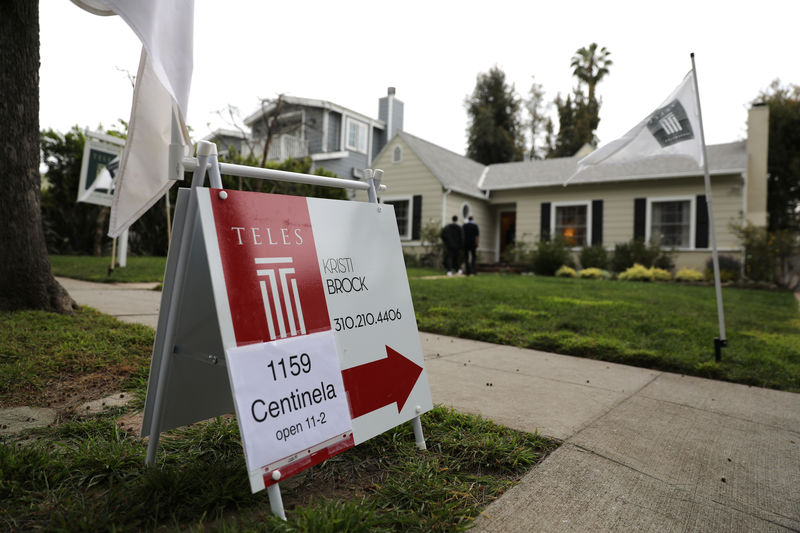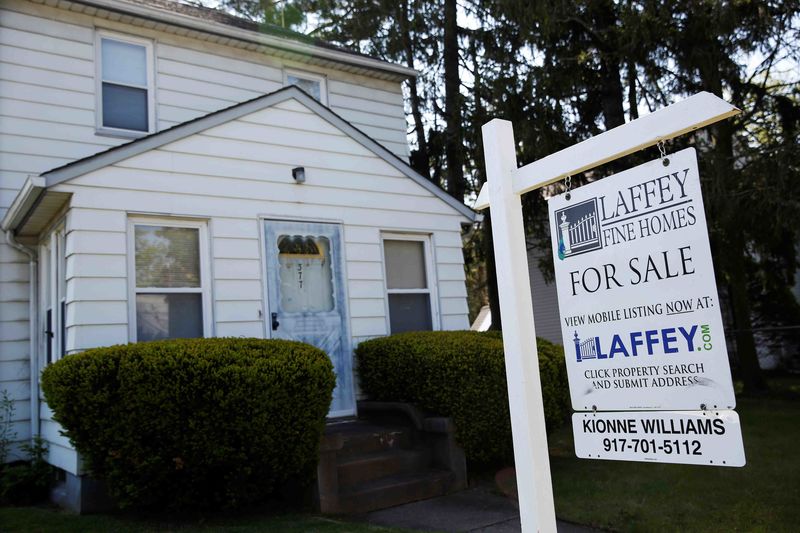By Lucia Mutikani
WASHINGTON (Reuters) - U.S. home sales fell for a second straight month in April, weighed down by a chronic shortage of more affordable houses, the latest sign the economy was slowing after a temporary boost from exports and an inventory overhang in the first quarter.
The unexpected drop in sales reported by the National Association of Realtors on Tuesday came on the heels of data last week showing retail sales and industrial production dropped in April, which prompted economists to cut growth forecasts for the second quarter.
Falling mortgage rates and the lowest unemployment rate in nearly 50 years are boosting demand for lower-priced homes.
"A mismatch between strengthening entry level demand and scarce entry level supply is likely playing a role in the underwhelming sales pace," said Charlie Dougherty, an economist at Wells Fargo (NYSE:WFC) Securities in Charlotte, North Carolina.
"A significant breakout in existing home sales is unlikely this year."
Existing home sales fell 0.4% to a seasonally adjusted annual rate of 5.19 million units last month. March's sales pace was unrevised at 5.21 million units. Economists polled by Reuters had forecast existing home sales rising 2.7% to a rate of 5.35 million units in April.
Existing home sales, which make up about 90% of U.S. home sales, dropped 4.4% from a year ago, the 14th straight annual decrease. According to the NAR, there was a 10% drop from a year earlier in sales of houses priced $100,000 and below.
The Realtors group said there was strong demand in this market segment, but not enough homes for sale. The inventory of housing in this price bracket dropped 17.3% from a year ago.
The NAR also said last year's revamp of the U.S. tax code, which reduced the amount of mortgage interest payments homeowners could deduct, was crimping demand for homes priced $1 million and above. There has been a marked drop in sales in high tax states such as New Jersey and Connecticut.
The tight housing supply, especially in the lower end of the market is likely because of land and labor shortages.
A survey last week also showed that while single-family home builders were the most optimistic in seven months in May, they complained that they "continue to deal with ongoing labor and lot shortages and rising material costs that are holding back supply and harming affordability."
The government reported last week that permits to build single-family homes fell for a fifth straight month in April, touching their lowest level since November 2016.
SOLID FUNDAMENTALS
April's drop in existing homes sales means less brokers' commissions, which suggests that housing could remain a drag on gross domestic product in the second quarter.
As a result, Goldman Sachs (NYSE:GS) lowered its GDP growth estimates for the April-June quarter by a tenth of a percentage point to a 1.6 percent annualized rate. The economy grew at a 3.2 percent pace in the first quarter. Spending on homebuilding contracted in the first quarter, the fifth straight quarterly decline.
"With the soft housing market and manufacturing faltering, it is imperative that the service side of the economy holds up if growth is to remain solid," said Joel Naroff, chief economist at Naroff Economic Advisors in Holland, Pennsylvania.
The PHLX housing index was trading higher, tracking a broadly firmer U.S. stock market. The dollar rose slightly against a basket of currencies. Prices of U.S. Treasuries fell.
Despite the persistently weak sales, housing market fundamentals are strong. The 30-year fixed mortgage rate has dropped to an average of 4.07% from a more than seven-year peak of about 4.94% in November, according to data from mortgage finance agency Freddie Mac.
This follows a recent decision by the Federal Reserve to suspend its three-year monetary policy tightening campaign. The robust labor market is steadily pushing up paychecks, which is narrowing the gap between house prices and wages.
Last month, existing home sales fell in the Northeast and South. They were unchanged in the Midwest and rose in the West.
There were 1.83 million previously owned homes on the market in April, up from 1.67 million in March and 1.8 million a year ago. At April's sales pace, it would take 4.2 months to exhaust the current inventory, up from 3.8 months in March.
A six-to-seven-month supply is viewed as a healthy balance between supply and demand. The median existing house price increased 3.6% from a year ago to $267,300 in April.
Last month, houses for sale typically stayed on the market for 24 days, the shortest since May 2011 when the NAR started tracking the series, down from 36 days in March and 26 days a year ago. About 53% of homes sold in April were on the market for less than a month.

First-time buyers accounted for 32% of sales last month, down from 33% in March and a year ago. Economists and realtors say a 40% share of first-time buyers is needed for a robust housing market.
